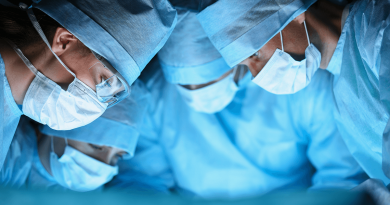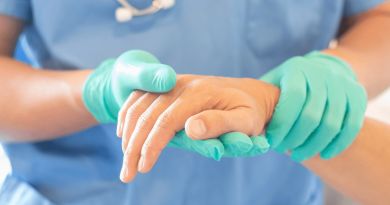Latest technologies in vascular disease treatment

In the ever-evolving field of vascular medicine, leveraging advanced technologies to provide minimally invasive treatments for vascular diseases not only enhances patient outcomes but also reduces recovery times and improves overall quality of life. Three of the latest procedures include transcarotid artery revascularization (TCAR), fenestrated aortic aneurysm repairs (FEVAR) and the use of minimally invasive devices for the treatment of occlusive peripheral arterial disease.
Transcarotid artery revascularization
TCAR is a revolutionary procedure designed to treat carotid artery disease. Carotid artery disease, a major cause of stroke, occurs when fatty deposits clog the carotid arteries, the main blood vessels that deliver blood to the brain.
“TCAR stands out because it combines the best aspects of traditional open surgery and minimally invasive endovascular surgery to prevent embolization and reduce the risk of stroke during the procedure,” said Dr. Jorge Miranda, Baylor Medicine vascular surgeon and assistant professor. “This technique offers a safer alternative for patients at high risk for conventional surgery, with quicker recovery times and fewer complications.”
During the TCAR procedure, a small incision is made at the neckline, directly above the carotid artery. A specialized device is used to temporarily reverse blood flow in the artery, reducing the risk of stroke while placing a stent to open the blockage.
Fenestrated aortic repairs
Aortic aneurysms, particularly those located in the abdominal region, pose significant risks if left untreated. Traditional open surgical repair of these aneurysms can be highly invasive and demanding for patients.
“Due to co-morbidities, patients may not be candidates for open repair, so Baylor Medicine employs fenestrated endovascular aortic repair, a cutting-edge, minimally invasive option for patients with complex aortic aneurysms,” Miranda said.
FEVAR involves the use of a customized stent graft with small fenestrations, or openings, that align with the branching arteries of the aorta. This personalized approach ensures a precise fit and allows for the treatment of aneurysms that extend near critical arteries. By threading the stent graft through a small incision in the groin, patients experience less pain, shorter hospital stays and faster recovery compared to traditional open surgery.
Minimally invasive options
Peripheral artery disease (PAD) affects millions of people worldwide, leading to reduced blood flow to the limbs and increasing the risk of severe complications such as ulcers, gangrene and limb loss. Baylor Medicine utilizes a range of advanced lower extremity devices to address this condition effectively and minimally invasively. Traditional balloon angioplasty has advanced into newer types of balloons designed to treat different kinds of blockages in blood vessels:
- Drug-coated balloon angioplasty: These balloons are coated with medication that helps keep the blood vessel from narrowing again over time.
- Scoring angioplasty: This technique uses a specially designed balloon to gently break up the plaque causing the blockage in a controlled way, lowering the chances of the vessel closing again.
- Lithotripsy: This method uses sound waves to break apart hard calcium deposits in the blood vessels, making it easier to clear the blockage.
Other innovative devices are atherectomy systems that remove plaque from the arterial wall.
“At Baylor Medicine we tailor our choice of device depending on the morphology, meaning the form, structure and shape of the blockage and blood vessels and disease pattern of the patient,” Miranda said.
In addition to these devices, Baylor Medicine employs bioresorbable vascular scaffolds, which provide temporary support to the artery before gradually dissolving, leaving the vessel unobstructed without any permanent implant.
By Tiffany Harston, communications associate in the Michael E. DeBakey Department of Surgery



